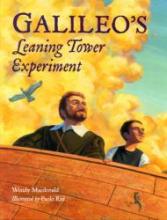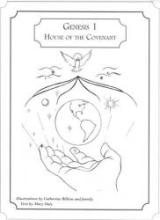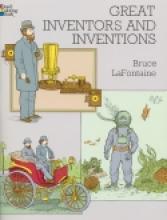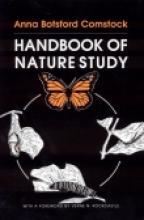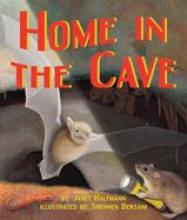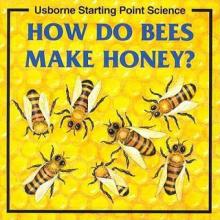Science
Galen and the Gateway to Medicine
Galen was born in 129 A.D. in present day Turkey (at that time part of the Roman Empire). When he studied medicine, medical training was very haphazard, but in his lifetime he revolutionized the idea of what a doctor should be, both by his example as a renowned doctor and his extensive writings on anatomy and pharmacology (some of which are still in existence today). His experience in treating patients from wounded gladiators to the wealthy of Rome to Roman emperors, extensive study of medicinal plants, dissection of animals, etc. led to his remarkable success as a doctor and the respect with which his writings were treated.
The medical aspects of the book largely focus on the quest to understand the purpose of each of the organs and the workings of the circulatory system. The author also provides us with a final chapter which summarizes the medical advancements after Galen that led to our current understanding of how the body works. Like Archimedes and the Door of Science, this story will be best understood by ages ten and up and takes a certain amount of concentration to follow the story and absorb its content well. However, the rewards are great in acquiring a deeper understanding of Roman culture, medicine, and the respect for life that has been passed down from the Hippocratic tradition.
Galileo's Leaning Tower Experiment
Science readers are to be found if you look around enough as this book demonstrates. It is the fictional story of Massimo, a boy who regularly throws his uncle's lunch off a bridge to his boat as his uncle rows by below. Galileo happens to see that the bread and the cheese land at the same time. The story ends atop the leaning Tower of Pisa, as legend suggests Galileo did.
The illustrations are a little disappointing, the people in particular. The story is sometimes forced as math and science readers often are; however, overall it is a great tale that teaches a basic principle of physics sure to have your children dropping objects from heights. It even alludes to Galileo's ramp experiments on acceleration. The last page briefly fills in the reader on the period in history, what in the story is fact and fiction, and the formula for calculating speed.
Overall this is a great introductory physics science book.
Galileo's Leaning Tower Experiment
Additional review: World Geography, World History, science... and some creative fictional characters as well! All in a beautiful information Picture Book.
The story of the legendary Leaning Tower of Pisa experiment by Galileo is brought to life here around the story of a boy, Massimo, who was very clever, and dropped his father's lunch from a bridge everyday in calculating motions... until a passer-by professor named Galileo witnesses it and rethinks the whole Aristotelian notion on the subject!
The pictures are colorful, warm and very pleasant, and some of the angles are taken from delightful perspectives!
A gem. A very nice way to introduce children to Galileo and to some concepts of Physics.
Genesis 1: House of the Covenant
8.75x12" heavy paper, suitable for pencils, markers, or crayons
Nihil Obstat
Good Night, Little Sea Otter
Great Inventors and Inventions
Nicely drawn images and fairly detailed text overview important inventions and their inventors from Gutenberg's Movable Type (1438) to the Laser (1960). Arranged in chronological order, the descriptions give some historical background and scientific details about each invention. There is a certain amount of typical problems in the text regarding the medieval era to be full of "darkness and superstition" and a rather incomplete and somewhat erroneous account of Galileo's run-in with the Catholic Church.
The inventions covered are: Movable Type, the Microscope, the Telescope, the Mechanical Calculator, the Steam Engine, the Power Loom, the Submarine, the Cotton Gin and Mass Production, the Steamboat, the Electric Battery, the Jacquard Automatic Loom, the Electric Motor and the Electric Dynamo, Photography, the Mechanical Reaper, the Revolver Pistol, the Telegraph, the Underwater Diving Apparatus, the Sewing Machine, the Internal Combustion Engine, the Machine Gun, Dynamite, the Typewriter, Telephone, Phonograph/gramophone, Electric Light Bulb, Electric Power Station, Kinetograph, Kinetoscope, the Automobile, Alternating Current, the Tesla Coil, Motion Pictures, Radio, Television, Iconoscope, Kinescope, Powered Aircraft, the Vacuum Cleaner, the Triode Radio Vacuum Tube, Mass Production and the Automobile, the Battle Tank, the Liquid-Fuel Rocket, the Jet Engine, Xerography, the Helicopter, the Scuba System, the First Electronic Computer, the Transistor and the Laser.
Handbook of Nature Study
This is a very informative handbook on a large portion of nature, originally written for elementary school teachers. It covers wildlife, insects, farm animals, birds, fish, trees, flowers, weeds, vegetables, rocks, minerals, soil, climate, weather, magnets, the sun, moon, planets of our solar system and much more. According to the 1986 foreword, most of the living things described are common in the northeastern states of the U.S. but it covers a lot of material that would be helpful in other parts of the country as well. I've hardly begun to use this resource, but it looks like an excellent reference for all of those questions children want to know about the world around them. It can also be used as a teaching tool and studied more systematically as there are simple lessons designed to be used with children included with each subject. As the lessons are designed to work with real observation of the plants, they are particularly appropriate for a home school. The book is profusely illustrated with black and white photos. I would guess that there's an average of two photos per page. The language is a little archaic and some of the words would be a little difficult for younger children.
Copyrights 1911/1939
Home in the Cave
How Do Bees Make Honey?
A small, inexpensive book filled with pictures and lots of other information picture about bees and other insects. You'll learn how to tell bees apart from other insects, how bees live together in colonies and all about their beehives, how bees communicate with each other (my children have really enjoyed trying to re-enact the bee's dances) and of course how bees make honey. The one thing I didn't like is that the material is so disjointed because it jumps around between different kinds of insects.


